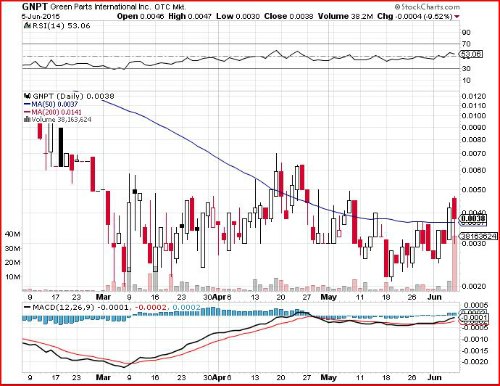Key Penny Stock
Fundamentals

Trading penny stocks without mastering these key penny stock fundamentals would be like building a skyscraper from the top down. It won't work! You've got to lay a solid foundation so you can build up.
Ticker Symbol
Every company that is publicly traded on the OTC Markets is issued a ticker symbol which typically consists of 4-5 letters (sometimes less for Big Board stocks) and it is simply a short cut for researching and/or trading stocks.
For
instance, Woodman Holdings Asset Management has the ticker symbol
WFMC...It's much easier to use the 4 letter ticker, than typing the
entire company name each time.
Authorized Shares (AS)
The
authorized share count is the number of shares that the company is
authorized to sell/issue, but are not currently in the market. A very
high AS with a low OS is a sign that massive dilution may be a future
factor. We'll cover dilution in later lessons.
Outstanding Shares (OS)
The
outstanding share count is a combination of all shares that have been
issued, including restricted shares which are not currently publicly
traded.
Float
The float is the number of shares that are currently being traded in the public market. This number should always be equal to or less than the OS.
Market Capitalization (market cap)
This is simply the OS x the most recent share price. If the OS count was 100,000,000 shares and the most recent price was .06, then the market cap would be $6,000,000
This
is a very important stat, because a company with revenues, real or
projected, of $500,000 annually that has a $200,000,000 market cap is
WAY overvalued and at some point the share price will likely plummet!
Below is an example taken from the OTC Markets website, found under the "company profile" section. Definitely familiarize yourself with this section as it should always be referenced as part of any research you do.

Average Daily Volume
This is simply the number of shares that, on average, trade on a daily basis. As simple as it is to define, it is an extremely important metric for trading penny stocks.
You
want liquidity in the stocks you trade, because there is nothing worse
than buying a stock with very light volume and finding yourself trapped
as the price plummets, but there are so few buyers that you can't get
out!
Higher Volume = Greater Liquidity
and that's a good thing!
It's important to note that when you are dealing with penny stocks that some of them trade for less than a penny and the volume can seem skewed a bit.
For instance, you might think that a stock with an average daily volume of 30,000,000 shares is very liquid and a good trading opportunity, but if that stock trades for .0002, then we are only talking about $6,000 worth of average volume.
In that example, you certainly wouldn't want to jump into that stock with a $5,000 buy! You could find yourself having a tough time getting your money back out.
Personally, I'd say to cap your buy at no more than 5% of the average daily volume. So,
- 30,000,000 average volume x 5% would equal a max buy of 1.5 million shares.
- $6,000 in average money volume x 5% would equal a max buy of $300.
There may be a unique set of circumstances where you may exceed that amount, but for the most part you should keep yourself from getting trapped if you follow the 5% rule.
Now that you've got the key penny stock fundamentals down, let's dig a bit deeper and take a look at some key SEC Forms.
Penny Stocks › for Dummies Guide › FundamentalsTable of Contents
Lesson 1:
What is a Penny Stock
Lesson 2:
Fundamentals
Lesson 3:
SEC Forms
Lesson 4:
Best Brokers
Lesson 5:
Risk vs Reward
Lesson 6:
Tools of the Trade
Lesson 7:
Stock Promoters
Lesson 8:
Trading Strategy
Lesson 9:
How to Find Stocks
Lesson 10:
How to Buy Stocks




